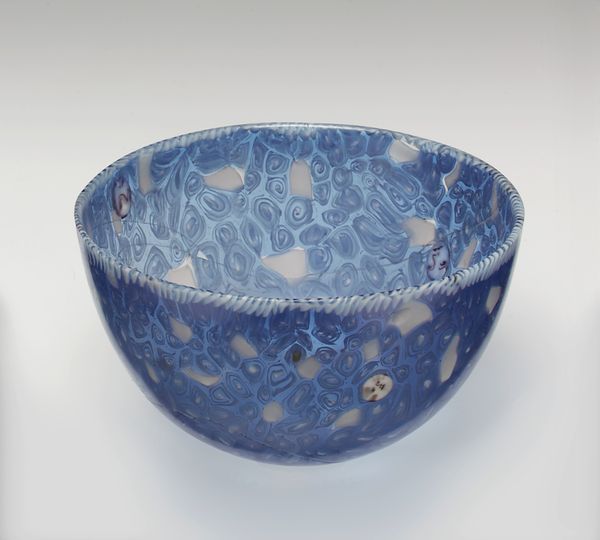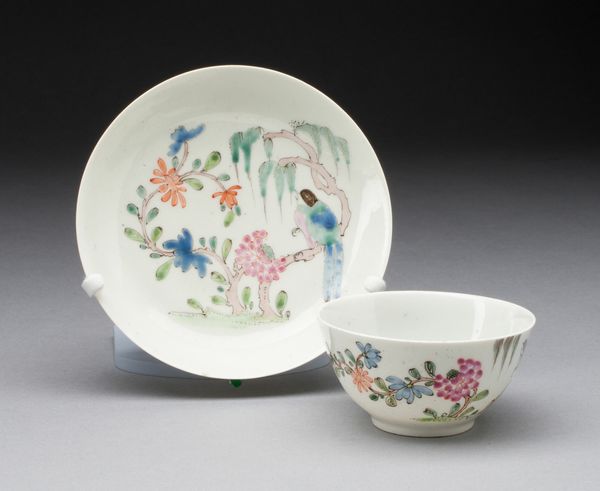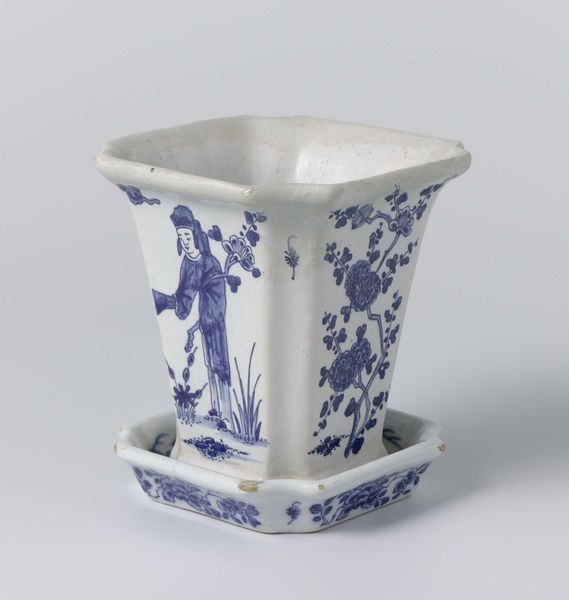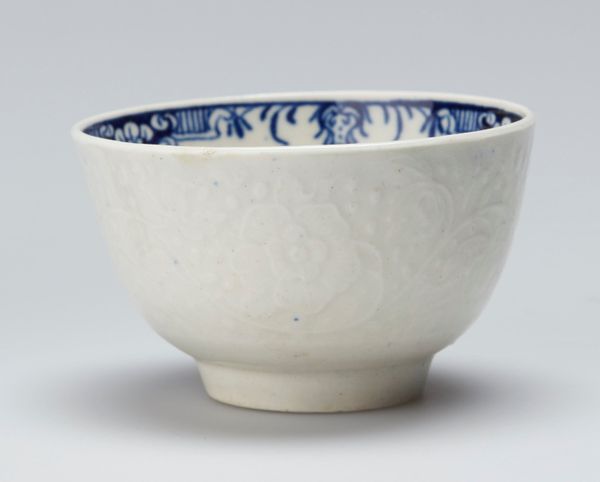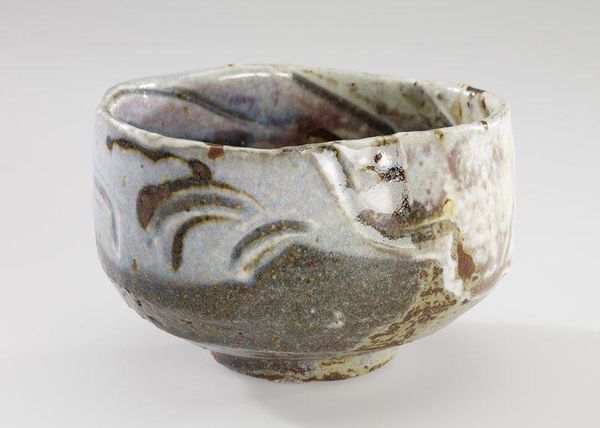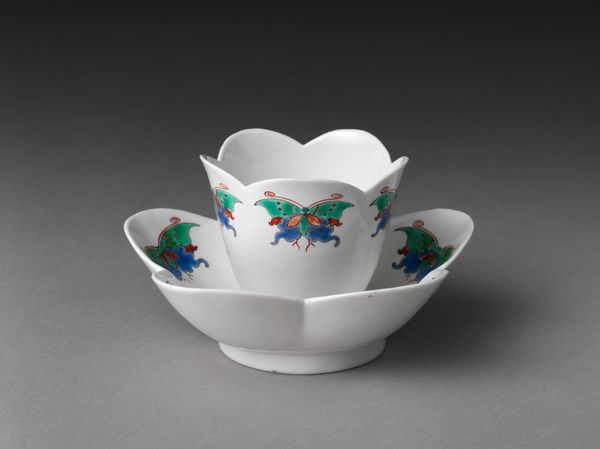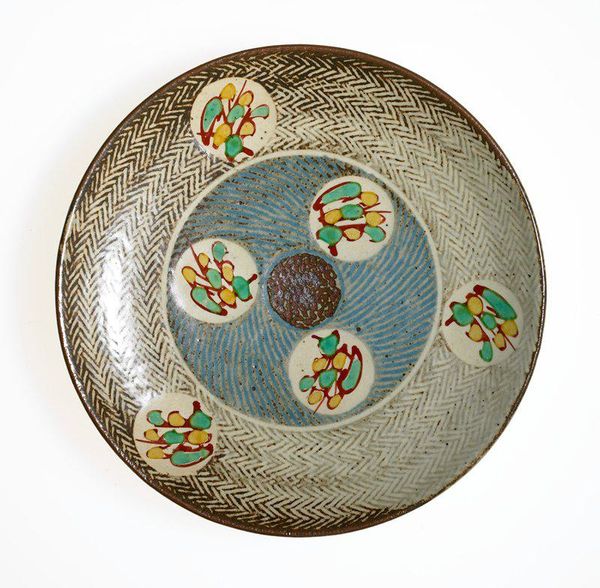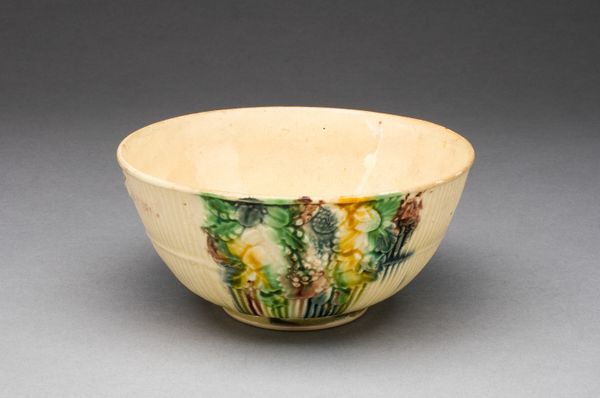
ceramic
#
art-deco
#
ceramic
#
geometric
#
ceramic
Dimensions: 2 1/2 x 9 x 9 in. (6.35 x 22.86 x 22.86 cm)
Copyright: No Known Copyright
Curator: Before us, we have a ceramic piece entitled "Two-handled bowl", created around 1925 by Vally Wieselthier. It’s currently held in the collection of the Minneapolis Institute of Art. Editor: It's playful, almost cartoonish. The stark geometry mixed with the pastel floral details gives it such an unusual feeling. Is it ceramic? Curator: It is indeed. Note how Wieselthier plays with contrasting shapes; the jagged rim versus the softer, rounded handles. And how do you interpret her choice to place geometric floral motifs on the interior? Editor: For me, these forms are rooted in Vienna and the history of women. Weiselthier, a woman working during this period, clearly reflects Art Deco conventions while challenging traditional representations of domesticity. This isn't your grandmother's china; there is a rebellion in this dish. It is bold. It’s confident. Curator: Your point highlights how artistic movements often absorb socio-political energy. Considering Art Deco's preference for streamlining, symmetry, and geometric forms, this bowl embodies the zeitgeist while also suggesting that beauty can be found in unexpected places and surprising configurations. What do the flowers bring to your understanding of the whole piece? Editor: For me, those stylized flowers suggest an attempt to embrace femininity—on her own terms. It pushes back against any constraint. She is both modern, embracing sharp new forms, and historically mindful, and it is telling of a modern woman’s negotiations within art. Curator: Precisely. By fusing both elements, the hard and the soft, Weiselthier manages to express something universal and also incredibly personal. Thank you for unpacking some of the history alongside my observations. Editor: Absolutely. This ceramic gives me a lot to ponder when I consider these artistic periods and the contributions from diverse voices—art offers ways into such expansive historical material.
Comments
minneapolisinstituteofart almost 2 years ago
⋮
Although the Wiener Werkstätte had been established in 1903 by Josef Hoffmann and Koloman Moser, it was not until 1917 that a separate building devoted to design studios and the production of ceramics was opened. The vast majority of the designers working for the Wiener Werkstätte Ceramic Workshop came from students attending the Kunstgewerbeschule (School of Applied Arts) in Vienna. Vally Wieselthier was one of several young women who had been students at the school and subsequently worked as designers for the ceramic workshop. In addition to her ceramic work, which is characterized by the use of subtle glazes and simple molded forms, she also designed glass, wallpaper and other graphic works for the Wiener Werkstätte. She also produced designs for other manufacturers of ceramics and glass, including the firm of Lobmeyr, which also worked with Josef Hoffmann.
Join the conversation
Join millions of artists and users on Artera today and experience the ultimate creative platform.



